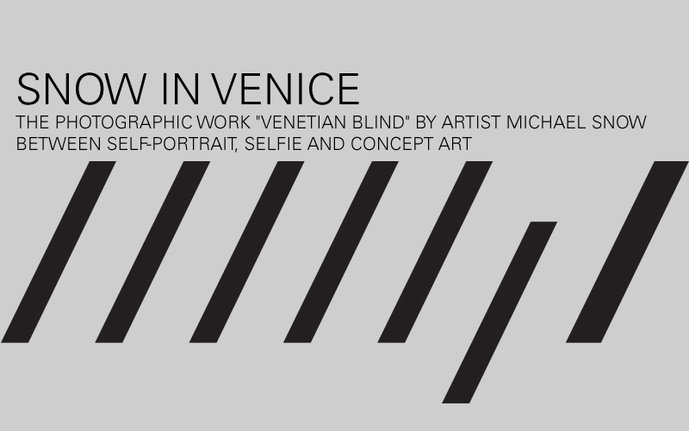

On April 2, 2017, the winner of the Golden Lion, Anne Imhof, published a photo of herself in Venice on her Instagram account: she is sitting with legs wide and arms crossed at the rear end of a U-shaped leather seating area in the lower deck of a boat, dressed completely in black, a Longchamp handbag at her feet and a dark cap with white lettering hiding half of her face. It is mirrored by the shiny black ceiling and the plastic stickers on the window panes reveal: “Turismo.” With the time of the publication of the picture, the knowledge of the Venice Biennale and that this woman is an artist, her shot can be understood immediately as a clear and broad hint. The title of her self-portrayal #venice #transport @juicyfilet conceals the fact that she is currently in the middle of the exhibition structure of her solo exhibition in the German Pavilion and is considered a favorite for the Golden Lion.
The photographic work Venetian Blind was created almost fifty years earlier, in 1970. On twenty-four polaroid photos, the Canadian conceptual artist Michael Snow can be seen photographing himself head-on, closing his eyes and furiously shaking his head. Due to the movement of the head, it appears blurred in the picture. The background of the picture is clearly visible: Venetian monumental architecture. If you put together the evidence (artist, Venice), the photographs can also be located in the events around the Venice Biennale. They also announce a success story, because the photos were taken the morning after the artist opened his solo exhibition in the Canadian Pavilion - the high point of his career so far.
From today's perspective, the formally arranged photographs (except for the closed eyes and the blurring of the face) represent a panorama selfie par excellance. They appear familiar and current, although they are already half a century old. Snow himself said several times that the photographs were not self-portraits. Art criticism of the work sees it differently - there are repeated self-portrait attributions and attempts to read the work as an autobiographical statement.
This contradiction of interpretation and self-expression allows the following interpretations with regard to Venetian Blind: First, that it is part of a certain staging strategy and thus functions in terms of the concept of the classic self-portrait; Secondly, with regards to Imhof's self-portrayal, it moves in the direction of an artistic selfie, since it is mainly intended to communicate (success); Or thirdly, that Venetian Blind can actually be understood as a conceptual representation-critical work as described by the artist.
The master’s thesis “Snow in Venice. The Photographic Work Venetian Blind by Artist Michael Snow Between Self-Portrait, Selfie and Concept Art” therefore poses the question, how nevertheless effective these criteria are despite the declared retreat from subjectivity and authorship in conceptual art, and how are they articulated.
Tutors: Prof. Matthias Bruhn, Dr. Barbara Kuon